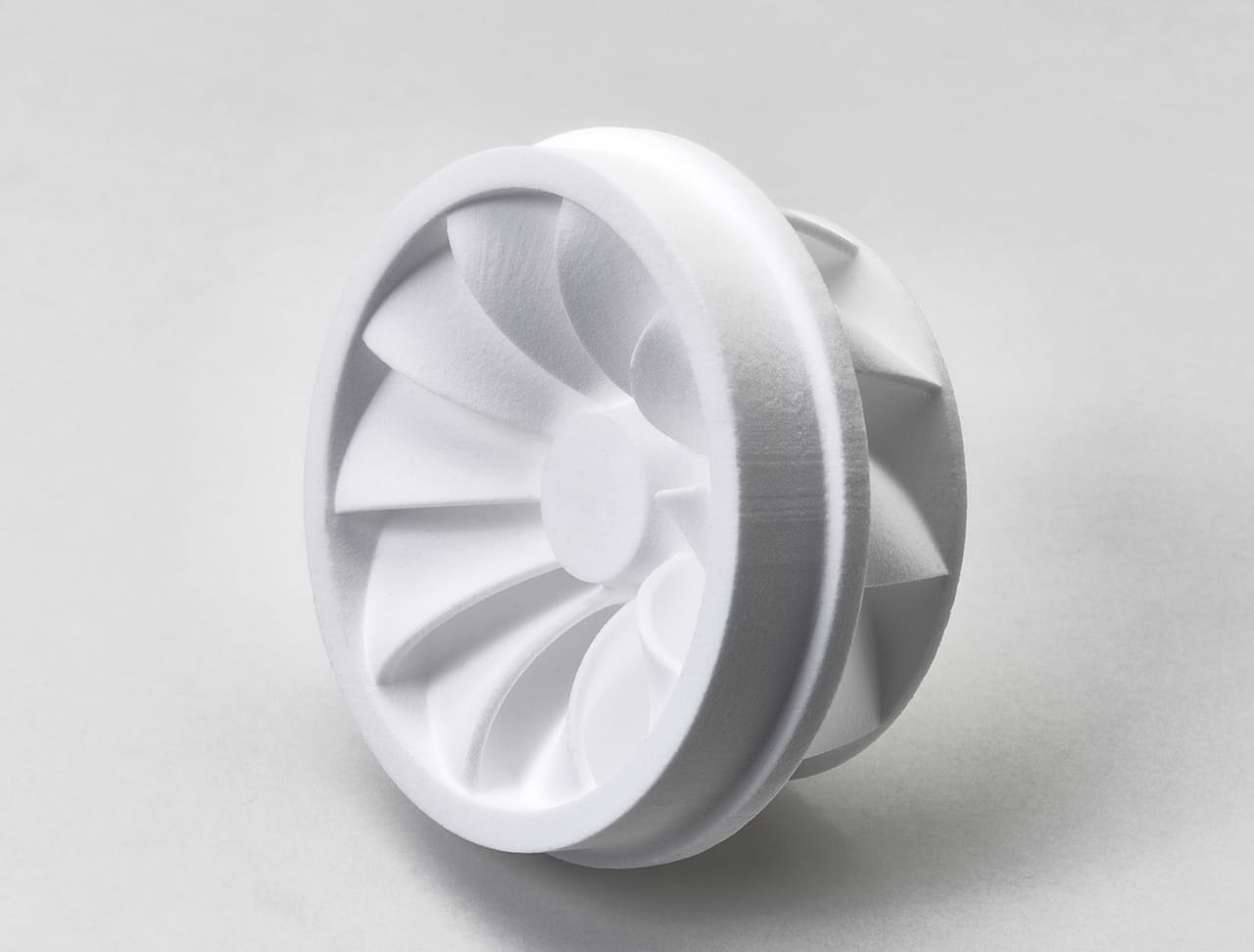
Voxeljet announced a new process that should achieve higher resolutions for 3D printed investment casting applications, but it’s all about the material.
Voxeljet has made a good business developing and marketing very large scale 3D printers specifically designed for the purpose of investment casting. The prints that come out of these machines are used to cast metal objects, for example, that offer the same engineering properties as any other casted objects, but the 3D printed molds allow the design to be far more complex than could be achieved with standard casts.
In general, the objects created by the Voxeljet process tend not to require fine details, as they are large scale. Voxeljet’s largest device, the VX4000, provides a build volume of an incredible 4 x 2 x 1m, so you can get an idea of the size they work with.
At that scale small details don’t often matter, as the tiny deviations on the surface are lost in the massive scale of the object.
However, there are some cases where finer resolution is required. It’s possible that post-casting finishing may be required, and this could be reduced by casting in a finer resolution, creating smoother surfaces.
That’s what Voxeljet seems to have done with their latest innovation, the “PolyPor C2 (PPC²)” process. They say it is a variant of their existing PMMA 3D printing process, which involves selectively dropping a proprietary binder on a flat powder bed.
The change is mostly related to the powder that forms the 3D printed mold. The new PPC2 material is no larger than 0.037mm, smaller than their previous PMMA material. This offers the potential for smaller (e.g. finer) 3D printed structures, and indeed that is the case. Voxeljet explains:
The improved surface quality and clearer edges on the parts are related to a finer PMMA particulate material of 37 μm (0,037 mm), which enables printing at a reduced layer thickness of 100 μm.
It’s not quite just the material change and print head, as I suspect there are a number of carefully tuned parameters to ensure optimal 3D printing at this level.
This is an excellent example of making a change to an existing system to produce far better results. Sometimes major improvements are not always achieved by wholesale replacement of equipment, but instead by looking closely at an existing system and making an ingenious change.
Voxeljet did not say whether the PPC2 process can be implemented on existing Voxeljet equipment by means of an upgrade, but I suppose it is theoretically possible.
Via Voxeljet

